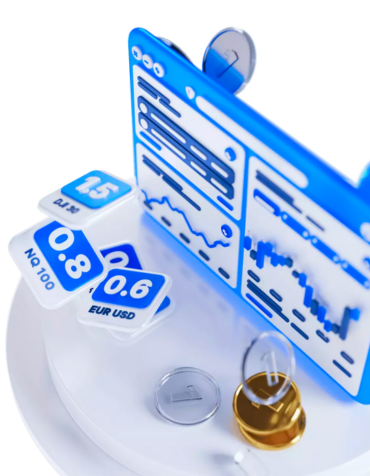We round up the best brokers that we believe offer best value for forex traders.





Trading the ETBUSD forex pair involves buying or selling it in the foreign exchange (forex) market. Here are the basic steps to trade ETBUSD:
To trade any forex pair, including ETBUSD, you'll need to open an account with a reputable forex broker. Ensure that the broker offers access to this specific ETBUSD pair.
Deposit funds into your forex trading account. The amount you deposit will determine the size of your trading positions.
Before making any trades, perform a thorough analysis of the ETBUSD pair. This analysis typically involves fundamental analysis (economic data, interest rates, geopolitical events) and technical analysis (price charts, indicators) to determine your trading strategy.
Most brokers offer trading platforms that allow you to execute trades. Familiarize yourself with the platform's interface and tools.
Choose whether you want to buy (long) or sell (short) the ETBUSD pair based on your analysis. Enter the trade order on your trading platform, specifying the amount (lot size) you wish to trade.
Executes the trade immediately at the current market price.
Sets a specific price at which you want your trade to be executed.
Sets a price at which your trade will be triggered if the market moves in a certain direction.
To manage risk, consider setting stop-loss orders to limit potential losses and take-profit orders to lock in profits at a certain price level.
Once your trade is executed, monitor the ETBUSD pair's price movement. Keep an eye on news and events that may impact the exchange rate.
When you achieve your trading objectives, either manually close the trade or wait for your predetermined take-profit or stop-loss levels to be reached.
After closing your trade, assess the outcome. Review your trading strategy and learn from both successful and unsuccessful trades to improve your skills.
Always practice proper risk management. Never risk more than you can afford to lose, and consider using leverage cautiously if available.
The first one is the breakout strategy. This strategy is all about taking advantage of big price movements after a period of consolidation.
To implement this strategy, you need to first identify a period of consolidation. Look for a range-bound market where the ETBUSD exchange rate has been moving within a specific range. Once you've identified this consolidation phase, set entry orders slightly above the upper range boundary if you want to buy or below the lower range boundary if you want to sell.
Next, it's important to have stop-loss and take-profit levels in place. Set your stop-loss orders below the lower range boundary when buying or above it when selling. This will help limit potential losses. For take-profit levels, choose an appropriate level based on your risk/reward ratio.
Throughout this strategy, it's crucial to monitor price action closely. Keep an eye on how prices move after entering trades and adjust your stop-loss and take-profit levels accordingly.
Moving on to another strategy called the moving average crossover strategy. This one focuses on identifying trend reversals by analyzing two different moving averages.
To use this strategy effectively, start by choosing suitable moving averages with different timeframes. For example, you could use a 50-day and 200-day moving average.
The next step is to look out for trend reversal signals. When the shorter-term moving average crosses above the longer-term one, it suggests a potential bullish signal or buying opportunity. On the other hand, when the shorter-term moving average crosses below the longer-term one, it indicates a bearish signal or selling opportunity.
Based on these signals, execute your trades accordingly - enter long positions (buy) when there is a bullish crossover and short positions (sell) when there is a bearish crossover.
Lastly, let's talk about support and resistance strategy which aims at identifying key levels where price tends to reverse its direction.
To implement this strategy, you need to look for levels of support and resistance where the ETBUSD exchange rate tends to reverse. These levels are usually areas where prices have historically struggled to break through or have found support.
By identifying these key levels, you can make trading decisions based on whether the price is likely to bounce off a support level or retreat from a resistance level.